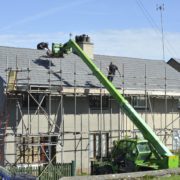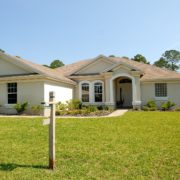Design Makes a Difference in Affordable Housing
Shared housing, modular construction are among the growing trends helping reduce the costs of new and rehab development.
In 2018, renters in Queens, N.Y., will be able to move into a furnished bedroom at a new apartment tower in the Long Island City neighborhood for as little as $1,200 a month. Just to compare, the rent for a studio apartment in the same neighborhood, just across the East River from Manhattan, starts at more than $2,000 a month.
With a few tweaks to the business model, the rent for a bedroom at developments like 29-26 Northern Blvd. could fall as low as $650 a month— even in a town like New York City—without help from housing subsidies other than perhaps a local property-tax abatement.
“Density is the key,” says Chris Bledsoe, CEO and co-founder of Ollie, a “shared-housing” company. Dense new developments may provide “a large-scale solution to a large-scale problem: housing affordability,” he says.
In this way and others, design is reshaping the discussion regarding affordable housing. Companies like Ollie are using dense new designs, including shared housing and micro-units, to drive down the cost of creating new buildings. Other developers are using construction techniques like modular housing to fight rising construction costs. Sustainable-design ideas also continue to lower the cost to operate apartment communities and may help housing properties last longer, helping to increase the supply of housing.
Shared Housing Changes the Game
The 42-story apartment tower at 29-26 Northern Blvd., developed by Simon Baron, will open next year with more than 470 apartments. Ollie will operate 13 of the floors as shared housing. These two- and three-bedrooms units will be designed and marketed explicitly for roommates who will rent individual, furnished bedrooms. Residents will also get hotel-style services, including housekeeping and extensive amenity spaces.
In towns across the U.S., people squeeze into shared-housing arrangements in houses and apartments with floor plans originally designed for families. Ollie now has a pipeline of more than 50 developments that will create shared housing on purpose, ranging from 29-26 Northern Blvd. to a property now leasing in Pittsburgh. These communities come with efficient layouts and careful compliance with local building codes and housing regulations.
Bledsoe hopes to change rules in New York City that currently make it illegal for more than three unrelated people to share a housing unit. That would allow Ollie to create shared-housing suites with four bedrooms and cut the monthly rent for those bedrooms by a few hundred dollars apiece. As Ollie’s financing partners become more familiar with the model and its success, the cost of financing will also shrink.
Ollie also plans to experiment with modular construction, reducing the cost of development further. With all these changes, Bledsoe hopes to eventually offer shared living in New York City with rents as low as $650 a month.
Smaller Apartments May Provide Cost Savings
Other developers are simply building smaller apartments. Units just began leasing, for example, at Caesura, a new apartment community at 280 Ashland Pl. in Brooklyn, N.Y. Its 123 apartments, affordable to households earning a range of incomes, include 34 furnished micro-units with less than 400 square feet of living space. These tiny spaces are expensive, however, with rents starting at $2,590 a month.
“Most newly constructed micro-unit projects have been aimed at the higher end of the market,” explains Stockton Williams, executive vice president of content for The Urban Land Institute (ULI).
Developers are still making the case to their financing sources that renters will accept micro-units and shared housing, which is part of the reason for the higher cost of financing. Also, micro-units still include their own kitchens and bathrooms, which are the most expensive spaces to build in an apartment. So, while the cost to develop a micro-unit is less than for a standard-size unit, it’s not that much less.
Despite these challenges, recently built micro-units are delivering at rents 20% to 30% below those of conventionally sized units, according to ULI research.
“We believe a 10% to 20% size reduction in most markets is reasonable,” says Matt Rule, senior vice president of housing development for National Church Residences (NCR), an affordable housing developer based in Columbus, Ohio. “Developers and state agencies should constantly be re-evaluating unit-size requirements based upon market norms and not feel constrained by historical requirements,” he adds.
Modular Construction Drives Down Costs
New companies like modular-housing manufacturer Factory OS in San Francisco are partnering with affordable housing developers to create apartment buildings from large pieces—modules—built in factories and trucked to the jobsite.
“There’s definitely a role for modular construction in our industry,” says John Heppolette, co-head of Citi Community Capital, who says he’s following with excitement the progress of firms like Factory OS.
“More and more pieces of the construction process are being prefabricated in a controlled environment [off-site warehouses], which is lowering the cost of construction and mitigating some of the costly variables [such as weather],” adds NCR’s Rule.
Modular construction also seems to consistently reduce, by 30%, or even 50%, the time needed to build a property. This shorter schedule can save developers a lot of money. “Anecdotal evidence suggests modular and similar approaches can cut construction costs by 10 to 30%,” says ULI’s Williams.
However, developers are still working out a range of regulatory and logistical issues involved in prefab building. “Further analysis and experimentation will be required before we can call it a scalable solution to affordability challenges,” Williams adds.
Sustainability for the Long Term
Tough new standards for sustainable design have added to the cost of creating new apartments. However, sustainably designed housing is usually a lot less expensive to operate, especially over the long term, which can help affordable housing stay affordable over time.
“A balance needs to be struck on a case-by-case basis, with the end goal being what’s best for the residents and long-term financial feasibility of the project,” says Rule.
Sustainable-design features don’t have to add much cost when developers plan carefully to meet standards such as those of Enterprise Green Communities and the U.S. Green Building Council’s Leadership in Energy and Environmental Design (LEED) programs. Expensive additions like energy-efficient windows can allow developers to spend less on other features, such as HVAC systems.
“If there’s an additional cost, we typically see a 1% increase,” says Jared Lang, sustainable-development manager for the National Housing Trust Enterprise Preservation Corp.
The enthusiasm of environmental advocates to promote sustainable design has also brought new money to affordable housing developments, including favorable financing from Fannie Mae and Freddie Mac and grant and loan programs offered by state and local officials, according to Williams.
Sustainable design may also extend the useful life of apartments, affording properties one of the most-extensive and -effective affordable housing advantages: time. Housing stock that’s “old” but not yet historic tends to rent and sell at more affordable prices than new housing.
“In new construction and rehab, the conversation around sustainability is drawing more attention to the quality of affordable housing, encouraging better-quality construction that lasts longer,” says Rule.
SOURCE: http://www.multifamilyexecutive.com/ By Bendix Anderson











